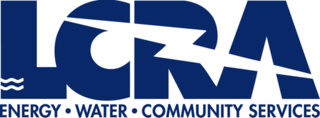
The Lower Colorado River Authority (LCRA) is a nonprofit public utility created in November 1934 by the Texas Legislature. LCRA's mission is to enhance the lives of the Texans it serves through water stewardship, energy and community service. LCRA provides public power, manages the lower Colorado River, builds and operates transmission lines, owns public parks, and offers community services.

Southern California Edison (SCE), the largest subsidiary of Edison International, is the primary electric utility company for much of Southern California. It provides 15 million people with electricity across a service territory of approximately 50,000 square miles.
Puget Sound Energy (PSE) is an energy utility company based in the U.S. state of Washington that provides electrical power and natural gas to the Puget Sound region. The utility serves electricity to more than 1.1 million customers in Island, King, Kitsap, Kittitas, Pierce, Skagit, Thurston, and Whatcom counties, and provides natural gas to 750,000 customers in King, Kittitas, Lewis, Pierce, Snohomish and Thurston counties. The company's electric and natural gas service area spans 6,000 square miles (16,000 km2).
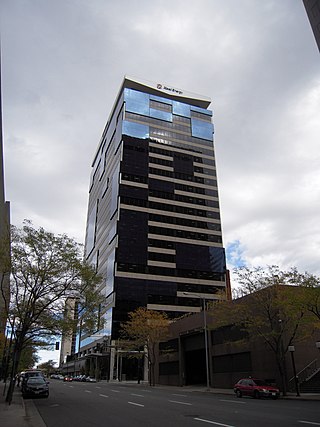
Xcel Energy Inc. is a U.S. regulated electric utility and natural gas delivery company based in Minneapolis, Minnesota, serving more than 3.7 million electric customers and 2.1 million natural gas customers across parts of eight states. It consists of four operating subsidiaries: Northern States Power-Minnesota, Northern States Power-Wisconsin, Public Service Company of Colorado, and Southwestern Public Service Co.
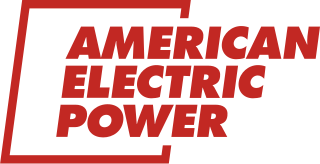
American Electric Power Company, Inc. (AEP), is an American domestic electric utility company in the United States. It is one of the largest electric utility companies in the country, with more than five million customers in 11 states.
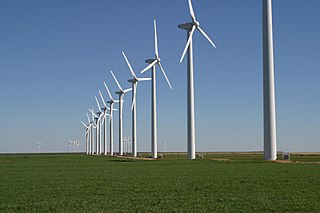
Wind power is a branch of the energy industry that has expanded quickly in the United States over the last several years. From January through December 2023, 425.2 terawatt-hours were generated by wind power, or 10.18% of electricity in the United States. The average wind turbine generates enough electricity in 46 minutes to power the average American home for one month. In 2019, wind power surpassed hydroelectric power as the largest renewable energy source in the U.S.

Wind power in Texas, a portion of total energy in Texas, consists of over 150 wind farms, which together have a total nameplate capacity of over 30,000 MW. If Texas were a country, it would rank fifth in the world: The installed wind capacity in Texas exceeds installed wind capacity in all countries but China, the United States, Germany and India. Texas produces the most wind power of any U.S. state. According to the Electric Reliability Council of Texas (ERCOT), wind power accounted for at least 15.7% of the electricity generated in Texas during 2017, as wind was 17.4% of electricity generated in ERCOT, which manages 90% of Texas's power. ERCOT set a new wind output record of nearly 19.7 GW at 7:19 pm Central Standard Time on Monday, January 21, 2019.
A feed-in tariff is a policy mechanism designed to accelerate investment in renewable energy technologies by offering long-term contracts to renewable energy producers. This means promising renewable energy producers an above-market price and providing price certainty and long-term contracts that help finance renewable energy investments. Typically, FITs award different prices to different sources of renewable energy in order to encourage the development of one technology over another. For example, technologies such as wind power and solar PV are awarded a higher price per kWh than tidal power. FITs often include a "digression": a gradual decrease of the price or tariff in order to follow and encourage technological cost reductions.

Making up over 62% of the state's generated electricity in 2022, wind power is the largest source of electricity generation in Iowa. In 2020, over 34 billion kWh of electrical energy was generated by wind power. As of 2022, Iowa has over 12,200 megawatts (MW) of installed capacity with over 6,000 wind turbines, ranking second and third in the nation below Texas respectively.

Solar power includes solar farms as well as local distributed generation, mostly on rooftops and increasingly from community solar arrays. In 2023, utility-scale solar power generated 164.5 terawatt-hours (TWh), or 3.9% of electricity in the United States. Total solar generation that year, including estimated small-scale photovoltaic generation, was 238 TWh.
AES Barbers Point Plant was a medium-size coal-fired electrical power station located in the south-west corner of the Hawaiian island of Oahu. Owned and operated by AES, the plant was the only coal-fired power plant in the state of Hawaii and was the state's leading single source of toxic pollutants. AES Barbers Point Power Plant consisted of a single unit on the grounds of Campbell Industrial Park, had a year-around capacity of 180 MWe, and in 2006 represented about 11% of Oahu's commercial electricity supply.
Lalamilo Wells is a wind farm on the island of Hawaii. It is located within the ahupuaʻa called Lalamilo, between the coastal area known as Puako, Hawaii, and the inland towns of Waimea and Waikoloa Village, Hawaii. It was commissioned in 1985 with 39 17.5 kW Jacobs wind turbines and 81 20 kW Jacobs wind turbines, yielding a total capacity of 2.3 MW.

The energy sector in Hawaii has rapidly adopted solar power due to the high costs of electricity, and good solar resources, and has one of the highest per capita rates of solar power in the United States. Hawaii's imported energy costs, mostly for imported petroleum and coal, are three to four times higher than the mainland, so Hawaii has motivation to become one of the highest users of solar energy. Hawaii was the first state in the United States to reach grid parity for photovoltaics. Its tropical location provides abundant ambient energy.

Kaheawa Wind Power is one of the largest wind farms in Hawaii. It is located on the island of Maui above the town of Maalaea in the West Maui Mountains. Phase one of the project was completed in 2006 by developer and operator First Wind and produces 30 MW from 20 GE Energy 1.5 MW wind turbines.

Energy in the U.S. state of Hawaii is produced from a mixture of fossil fuel and renewable resources. Producing energy is complicated by the state's isolated location and lack of fossil fuel resources. The state relies heavily on imports of petroleum. Hawaii has the highest share of petroleum use in the United States, with about 62% of electricity coming from oil in 2017. As of 2021 renewable energy made up 34.5% on Oahu, Maui and the island of Hawaii.
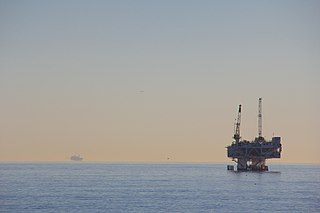
Energy is a major area of the economy of California. California is the state with the largest population and the largest economy in the United States. It is second in energy consumption after Texas. As of 2018, per capita consumption was the fourth-lowest in the United States partially because of the mild climate and energy efficiency programs.

Wind power in Hawaii is produced by the state's 132 commercial wind turbines, totaling 236 MW in capacity. In 2015, wind turbines produced 6.4% of Hawaii's electricity. In 2012, Hawaii generated 367 million kWh from wind power.
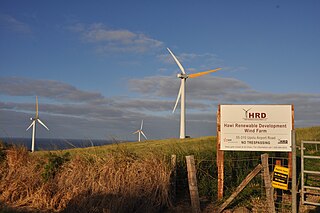
Hawi Wind Farm is a wind farm on Upolu Point, the northern tip of Hawaii's largest island, Hawaiʻi. Commissioned in 2006, it comprises sixteen 660 kW wind turbines manufactured by Vestas, specifically the Vestas V47 turbine. At maximum capacity the farm is able to produce 10.56 MW.

Enel North America is an American company headquartered in Andover, MA, United States. One of the renewable energy operators in North America, it was formed as a subsidiary of the global utility Enel S.p.A. in 2000. It has operations in the United States and Canada through its renewables and energy services businesses, with a portfolio including over 9.6 GW of renewable capacity, 160,000 EV charging stations, 4.7 GW of demand response capacity and 14 utility-scale battery energy storage systems, totaling 1,416 MWh of capacity under construction or in operation. It serves a customer base of over 4,500 businesses, utilities, and cities in North America.

















